The introduction of this blog post lays the groundwork for the entire article. It briefly introduces the devil’s ivy plant, its appeal as a low-maintenance houseplant with stunning foliage, and its air-purifying properties. Notably, the plant goes by various names, such as golden pothos, Epipremnum aureum, and money plant.
Maintaining a healthy devil’s ivy plant is emphasized, as a flourishing plant not only beautifies a home but also enhances air quality. Proper care is essential to prevent issues like stunted growth or discolored leaves.
The blog will cover topics such as pot and soil selection, watering, fertilization, light needs, pruning, propagation, and addressing common problems. By outlining these areas, readers can easily understand and navigate the content.
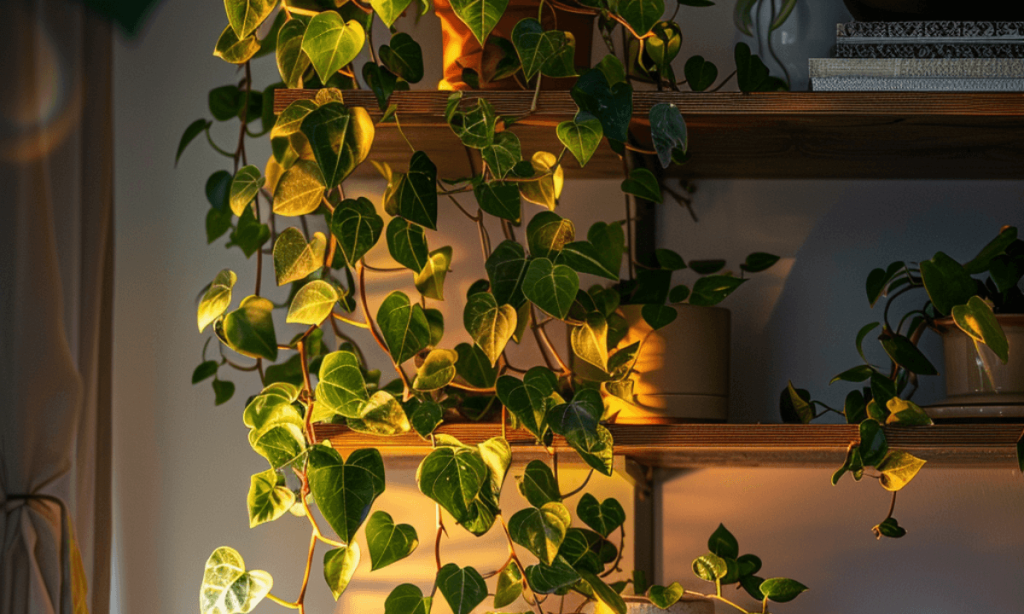
Understanding Devil’s Ivy Plant
Devil’s ivy is known for its trailing vine nature with heart-shaped leaves that can span up to 10 feet in the wild. There’s a range of varieties, some with variegated leaves or unique shapes, demonstrating the plant’s diversity.
Care for devil’s ivy is straightforward as it’s low-maintenance. It favors bright, indirect light but can adapt to dimmer settings. The soil should be kept consistently moist without becoming saturated. Using a balanced liquid fertilizer occasionally aids its growth.
Diverse cultivars of devil’s ivy include the ‘Marble Queen’ with green and white variegated leaves, the vivid ‘Neon’, and the ‘Golden’ with its golden leaves. Notably, devil’s ivy can be mistaken for pothos (Epipremnum aureum), which has akin care needs.
An essential point is that devil’s ivy is toxic if ingested, significant for households with pets or young children.
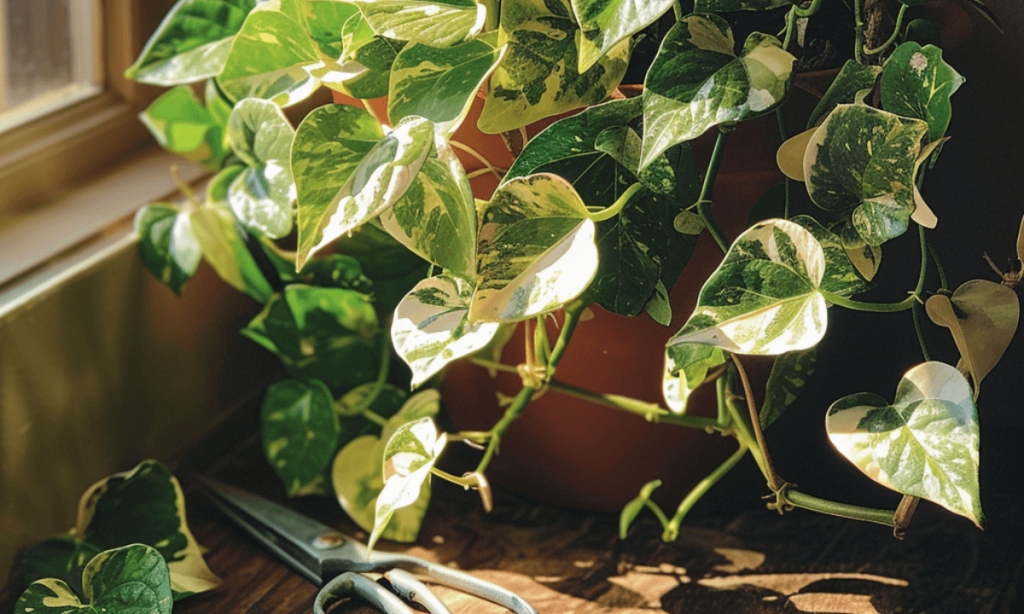
Choosing the Right Pot and Soil
When choosing a pot for devil’s ivy, size is crucial. Avoid pots that are too small, as they limit root growth, and overly large pots, which can cause water to accumulate, leading to root rot. Ideally, select a pot about 2 inches wider than the plant’s current one.
The pot material also affects devil’s ivy health. Terra cotta pots provide good airflow but dry out quickly, requiring frequent watering. Plastic pots retain moisture but might lack adequate airflow.
For soil, a well-draining mix is essential. A blend of peat moss, perlite, and vermiculite, with some sand or gravel, is ideal.
When repotting, gently loosen the plant’s roots to promote growth. Also, adding a drainage layer of rocks or gravel at the pot’s base ensures good water flow and optimal conditions for growth.
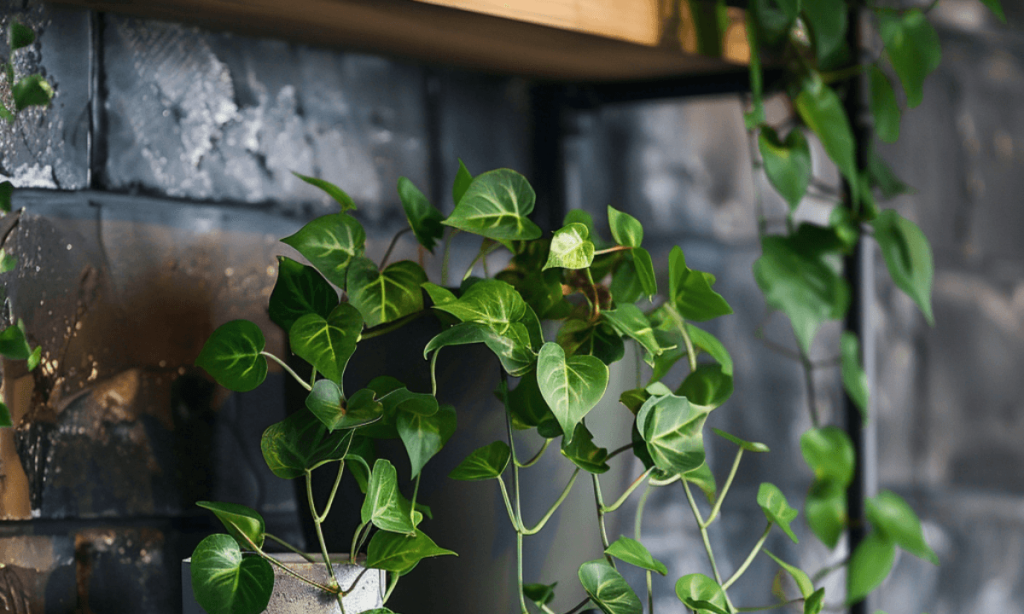
Watering and Feeding
Watering devil’s ivy requires maintaining a balance. The soil should be consistently moist but not waterlogged. Wait to water until the top inch of soil is dry to the touch.
A bottom-up watering approach is effective. Place the pot in a dish of water, letting the soil soak for about 30 minutes, ensuring root hydration without over-saturating.
Periodic feeding with a half-strength, balanced liquid fertilizer aids its growth. It’s advisable to fertilize once a month during spring and summer, avoiding fertilization in the dormant autumn and winter months.
Be cautious of over-fertilization, which can cause burnt leaves. Devil’s ivy is sensitive to chemicals like chlorine in tap water. Using filtered or distilled water is best. If using tap water, let it sit for 24 hours before watering to let chemicals evaporate, ensuring the plant’s well-being.
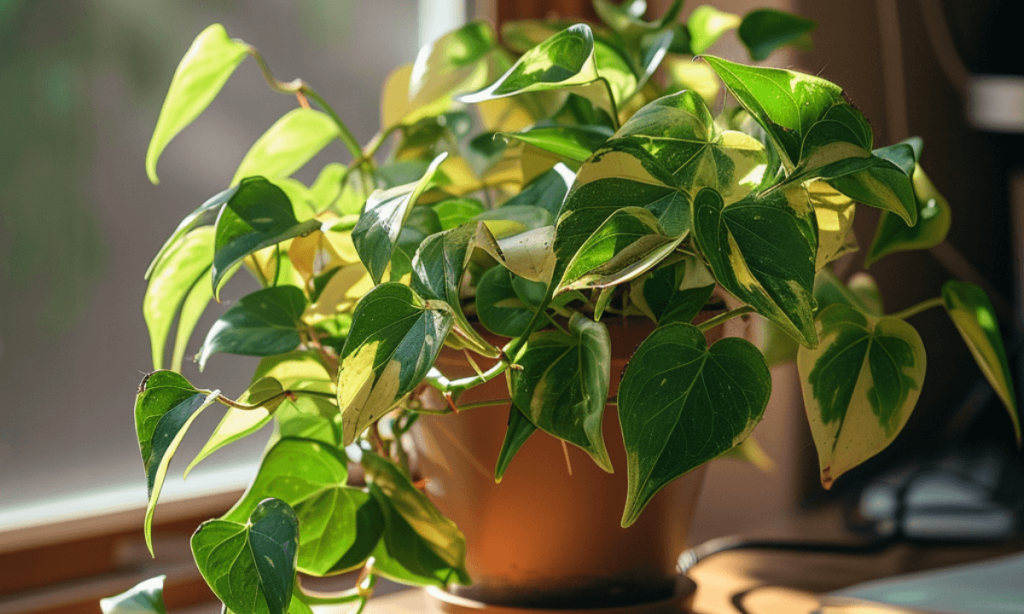
Light Requirements
Pruning devil’s ivy is vital for its health, controlling size, shape, and stimulating new growth. It’s ideal to prune in spring or summer. Use sharp scissors or shears for clean cuts, trimming yellow or brown leaves and overgrown stems. Cutting stem tips encourages bushier growth.
For propagation, stem cuttings are effective. Choose a 4-6 inch stem with healthy leaves, remove the bottom leaves to expose nodes, and optionally dip in rooting hormone. Plant in moist soil in a warm, lit area. In weeks, roots should form, and it can be repotted.
Layering is another propagation method. Select a ground-close stem, scrape its bottom, and pin it to the ground. After rooting, it can be separated and replanted.
To encourage climbing, attach devil’s ivy to supports like trellises. Use soft ties to attach stems without damaging the plant, creating a lush display.

Pruning and Propagation
Devil’s ivy is praised for its resilience and low maintenance. However, it can be susceptible to pests like spider mites, which cause yellowing or browning foliage. Neem oil spray or insecticidal soap can control these mites effectively.
Mealybugs, small white insects, can stunt growth and yellow the leaves. They can be removed using a cotton swab with rubbing alcohol, or treated with neem oil or insecticidal soap.
Devil’s ivy can also suffer from diseases like root rot, fungal leaf spot, and bacterial leaf spot, often due to overwatering or high humidity. Preventing these diseases requires careful watering, well-draining soil, and good ventilation. Using a fan or moving the plant to a more open area can help.
Quick action is essential when pests or diseases appear. Remove affected parts and treat with neem oil or insecticidal soap. Isolating the plant can prevent further spread.
Prevention is vital; proper watering, lighting, and ventilation maintain the plant’s health and reduce pest and disease risks.
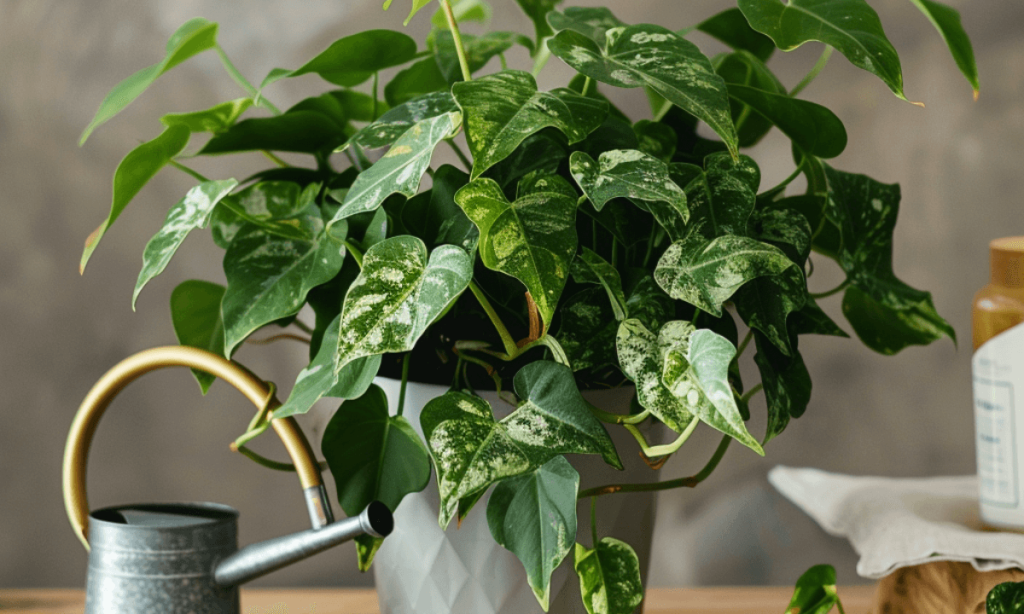
Common Problems and Solutions
Devil’s ivy doesn’t need frequent fertilization, and over-fertilization can harm it. Occasional feeding, however, promotes healthy growth and retains its green color.
A balanced, water-soluble fertilizer like 20-20-20 or 10-10-10 is ideal. Dilute according to the label’s instructions, applying monthly during spring and summer. Avoid fertilization in fall and winter.
Avoiding over-fertilization is essential to prevent salt accumulation, which can damage roots and discolor leaves. Flushing the soil with plain water periodically can help remove excess salts.
Organic options, such as fish emulsion or seaweed extract, are gentle alternatives. Use them monthly during the growing season, following label instructions for dilution.
Epsom salts, rich in magnesium, can enhance growth and foliage. Dissolve a tablespoon in a gallon of water, applying monthly during the growth phase.
When fertilizing, avoid direct contact with leaves to prevent burn. Apply to soil and water well for effective absorption.
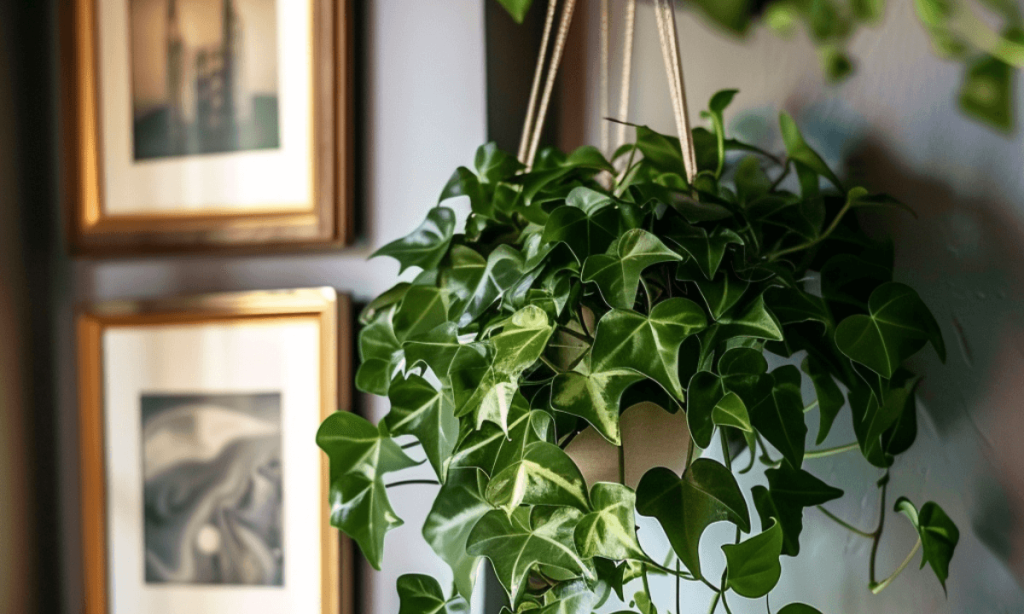
Conclusion
Devil’s ivy is easily propagated through stem cuttings. For success, start with a healthy plant and clean, sharp scissors or pruning shears.
Choose a strong stem, 4-6 inches long with multiple leaves. Cut just below a leaf node at a 45-degree angle. Remove the bottom inch’s leaves, leaving a few at the top.
For rooting, you can either place the cutting in water or plant it in soil after using rooting hormone. If using water, change it every few days. Once roots form, transfer to soil.
For soil propagation, plant the cutting in well-draining soil, water it, and cover the pot with a plastic bag to maintain humidity. Once new growth appears, the roots have formed.
Layering is another propagation method, where a stem section is buried in soil until it roots, then separated from the parent.
For the best results, keep the cutting or new plant in a warm, humid spot with bright, indirect light. This encourages growth and prevents shock. In time, the propagated devil’s ivy will thrive.
